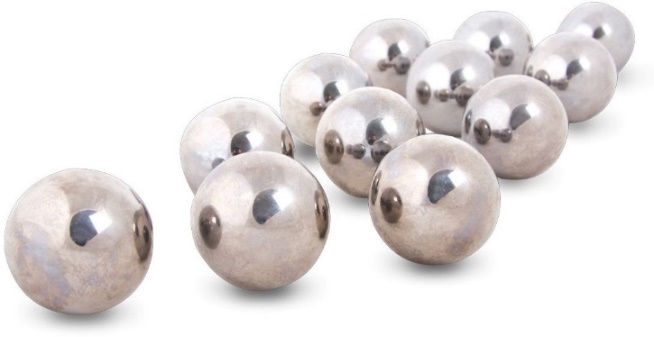Table of Contents
Standard Followed
ASTM C 131 or AASHTO T-96
Objective
This test is performed on coarse aggregates and entails the following objectives:
- To determine the Los Angeles Abrasion Value (LAAV) of aggregates which is an index of their hardness.
- To qualify the aggregates for their usage in the base course and sub-base course of road construction.
Related Theory
Abrasion:
The word ‘abrasion’ means wearing or erosion. For aggregates to be used in construction works, abrasion can lead to attrition of particles, disintegration them and ultimately affecting the durability of the structure, be it a pavement or concrete structure. Therefore, the aggregate material should offer resistance to abrasion-stimulating forces. Nevertheless, this resistance depends on the quality of aggregates used. The harder the material, the more resistant to abrasion it is.
In road construction, abrasion can result from repeated vehicular or traffic loadings. This can lead to a decrement in the effective thickness of the pavement that carries the load and a dusty road surface.
Pounding Action:
It means the striking of an object with any surface momentarily, subjecting the surface to an instantaneous impact load. This action is quite common in the field when the tires of a vehicle exert a pounding force on the pavement underneath them.
Los Angeles Abrasion Value (LAAV)
The Los Angeles Abrasion Value informs about the percentage wear of aggregates when they are subjected to abrasion and pounding. Indirectly, this value also tells about the hardness of a material, which is an intrinsic property of resisting any scratching or rubbing force. Lesser is the LAAV, harder is the material, and vice versa.
The test for the determination of LAAV involves rotating a metal cylinder containing aggregates and abrasive charges for a known number of revolutions and determining the fractional wear off during the test. The figure below abstracts the abrasion of aggregates during the test.
It can be seen and understood that the abrasive charges exert an impact force on the aggregates and the particles also rub against each other whilst each rotation of the cylinder. This rubbing and pounding action generate fines, which may either dust-coat the particles or split them. In both cases, the effective weight of aggregates still intact is determined and the LAAV is mathematically computed as;
Significance of LAAV
The test provides some important information which is summarized below:
- Greater is the LAAV, softer is the aggregate, and vice versa.
- The hardness of aggregates to be used in construction can be assessed through this test.
Apparatus
- Los Angeles Abrasion Machine, consists of a large cylinder made of steel, closed at both ends. The internal diameter and length of the cylinder are 28 in. and 20 in., respectively. Mounted on shafts, this cylinder is capable of rotating about the horizontal axis. The cylinder also consists of a shelf, projecting about 3.5 in. and extending throughout the length.
- Standard sieves, to ensure the sample to be tested conforms to the standard’s gradation criteria
- Weighing balance, to weigh the aggregate sample before and after the test
- Abrasive charges, to simulate the effect of pounding forces while the aggregates rub against each other. These are basically steel balls having an approximate diameter of 46mm and a mass of 390 to 445g.
Fig.: Abrasive Charges
Test Procedure
Take a representative sample of aggregates and perform sieve analysis on it. Consult the standard’s gradation criteria and based on the results of sieve analysis, decide the grading category for the test sample. The selection of gradation serves as a gauge for deciding the number of revolutions of the cylinder as well as the number of abrasive charges to be placed with the aggregate sample.
Source: ASTM C-131
Source: ASTM C-131
- Weigh the sieved sample on which the test is to be performed and record the value as original weight, W1.
- Place the sample inside the cylinder along with the abrasive charges and subject the cylinder to rotation such that the revolving speed is 30 to 33 rpm for 500 revolutions.
- After the cylinder has completed the defined number of revolutions, remove the aggregate sample from the cylinder.
- Sieve the sample through # 12 US sieve (1.7mm sieve) and separate the percentage of aggregates retained on the sieve. It is to be kept in mind that the sieving process should be continued for a duration such that the mass retention on the sieve becomes constant. In addition, the material passing through the sieve is the fraction unable to resist the wearing and pounding forces.
- Wash the retained material and oven-dry it. The significance of doing so is to remove the dust coatings from the particles, that otherwise may give misleading results.
- Finally, weigh the oven-dried sample and record its final weight, W2, post abrasion test.
- Calculate the Los Angeles Abrasion Value (LAAV) as
Observations and Calculations
Grading of test sample as per the standard =
Number of abrasive charges used =
Original Weight of the Sample, W1 = gm.
Final Weight after test (retained on Sieve # 12, washed, and oven-dried), W2 = gm.
The LAAV is an indicator of the percentage wear of aggregates and therefore, communicates the resistance offered by them when subjected to abrasion and pounding, which are inevitable when they are employed for construction purposes.
However, the permissible percentage wear of aggregates also depends on the in-situ loading conditions and magnitude. In this regard, the standards have set an upper limit on the abrasion percentage when the aggregates are tested in the laboratory. This limit also serves to level the disparity between the site conditions and test conditions as per the standard.
Standard Recommendations:
The ASSHTO standard suggests that the upper limit of percentage wear of aggregates to be used in the base course of pavement is 40% and that for the sub-base course is 50%.
Results
Los Angeles Abrasion Value (%) of the sample =
Sample qualification for intended use =
Test Precautions
- If a large rock piece is to be tested, it is imperative to crush it and sieve the sample prior to the test.
- If the aggregate quantity in lower sieves falls short of the standard’s recommendations, the aggregates retained on higher sieves can be crushed to serve the cause.
- If the aggregate quantity in higher sieves falls short of the standard’s recommendations, sieve out more material to obtain weights in the desired range
- It must be ensured that the cylinder is dust-tight. This is to prevent any fine material from escaping the cylinder, consequently giving disingenuous results.
Discussion
- The LAAV is independent of the particle sizes taken for the test. It only depends on the source of aggregates. Therefore, two aggregate samples taken from the same source but varying in particle sizes will have the same LAAV.
- The aggregates to be used in the base course of pavement are desired to have a lower LAAV. This is to cater to the stresses due to applied pressure, which start abating as the influence area increases when we move down to the sub-base course.
- Although the hardness of a material is its inherent property and cannot be tampered with, the aim of limiting the percentage of abrasion is to ensure the structure’s durability. Therefore, the quality of aggregates must not be compromised for economic considerations if the structure’s longevity is also sought-after.














